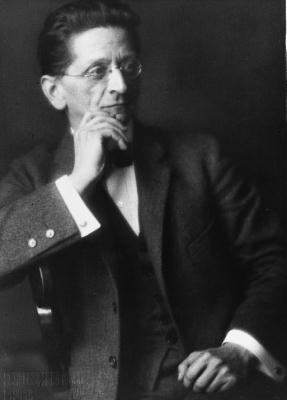Critic’s Notebook: Spring Funeral – from Zemlinsky, for Alfred Brendel
Also published in Die Presse: Brendel-Gedenken im Musikverein: Bruckner-Messe unter Lorenzo Viotti
With Zemlinsky’s funeral ode and Bruckner’s F minor Mass, his concert by the Wiener Singverein — aided and abetted by the Vienna Symphony under Lorenzo Viotti — became something of a a secular requiem for the late pianist.
Outside, summer had already announced itself in Vienna. Inside the Musikverein, Tuesday night’s audience was greeted with “The Funeral of Spring.” That would have been apt on seasonal grounds alone. As it happened, the programming of this rarely performed work by Alexander Zemlinsky — written by the 26-year-old Bruckner student in memory of the recently deceased Brahms — turned out to be sadly more appropriate still: just before the concert began, news trickled in of Alfred Brendel’s death.
The Musikverein's intendant Stephan Pauly said a few words of remembrance and the concert was dedicated to the iconic pianist. Imagine if Julius Fučík’s Entry of the Gladiators had been scheduled to open the evening. (Although, with Brendel’s dry, mischievous wit, that might have suited him perfectly. One can vividly picture the twinkle in his eye.)
The fact alone that the "Frühlingsbegräbnis" was performed at all deserves praise — before a single note sounded. This work, initially reminiscent of both Mendelssohn and Brahms, painted in bold strokes on a giant canvas, with oversized chorus, full orchestra, and soloists, is quite the experience: romantic, skirting the edge of kitsch, deeply moving — Dante Gabriel Rossetti manifest in music. Baritone Derek Welton delivered his part with relaxed, sonorous authority; soprano Christina Gansch’s voice carried beautifully, too. But the star of the work is the chorus — in this case, the Singverein — who seemed to have declared general mobilization and showed up, visibly and audibly, with every throat on deck.
The second half continued in this grand manner and the same line-up — joined now by mezzo Rachael Wilson and tenor Andrew Staples — for Bruckner’s Mass in F minor. Secular, spectacular, borderline overheated: Bruckner’s Mass has rarely sounded so much like Verdi’s Requiem. Glorious: the hushed, dark opening of the Kyrie, all restrained power. In general, it was the openings and isolated moments — usuually the soft, gentle ones — that stood out: Delicate entries, almost ostentatiously held-back (not always clean, but goosebump-worthy nonetheless), as on the “Crucifixus” in the Credo or in the luxuriant Benedictus.
And then, just as quickly, came the deluge — chorus and orchestra locked in battle for decibel-dominance, akin to King-Kong v. Godzilla, in the reverently trembling Golden Hall. In the first ten rows, ears fluttered in the Brucknerian blast wave. Lorenzo Viotti, striking his 'Cristo Redentor'-pose — arms spread, theatrical, relishing the sound — was clearly in his element. The orchestra supported him in this with vivid, committed playing.
Wilson’s voice was a rich, dark-toned exclamation mark — one could easily imagine her as Erda a few blocks away. Staples sang with an uncommonly natural and clear tone — especially for this role — a welcome contrast to the underlying tension of much of the rest of the performance.
For the curious: the concert airs again on July 29 at 7:30 PM on Ö1. And a little fashion advice: If you like the waistcoat of your three piece suit to go all the way to your neck, so it looks like you are wearing a V-neck sweater (partially necessitated by the narrow cut of the jacket which would otherwise cover the waistcoat altogether: Fine. Personal choice. But the straight/pointed collar with the black bow tie is never going to be a good look, no matter how instagrammable a hunk you might be.

Follow @ClassicalCritic









































































